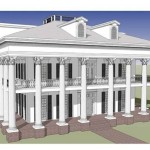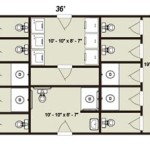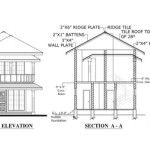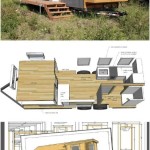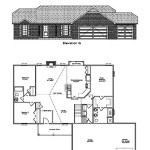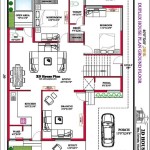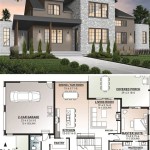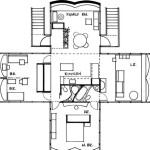Tugendhat House Floor Plan: An Architectural Deep Dive
The Tugendhat House, designed by architect Ludwig Mies van der Rohe, stands as a seminal work of modern architecture. Completed in 1930 in Brno, Czech Republic, the house's open floor plan and innovative use of materials revolutionized residential design. Understanding the Tugendhat House floor plan requires appreciating its underlying principles: functionalism, minimalism, and a seamless integration of indoor and outdoor spaces.
The house is essentially a single-story structure built on a sloping site. This allows for a split-level design with the main living areas situated on the upper level, taking full advantage of the panoramic views. The lower level houses auxiliary spaces, including the children's bedrooms, a chauffeur's apartment, and utility rooms. This tiered arrangement maximizes privacy and functionality while respecting the natural topography.
The upper level, the heart of the Tugendhat House, is a testament to open-plan living. Rather than distinct, compartmentalized rooms, the space flows freely, demarcated by freestanding elements like the iconic onyx wall and curved Makassar ebony partition. This open design fosters a sense of spaciousness and allows flexibility in how the space is used.
The main living area encompasses a living room, dining area, and study, all connected seamlessly. The onyx wall, a breathtaking feature, serves not only as a visual anchor but also a functional element, housing a retractable curved glass wall that separates the main living area from the winter garden. This innovative solution allowed the family to enjoy the outdoor space even during colder months.
The Makassar ebony wall, another defining feature of the Tugendhat House floor plan, curves gracefully, subtly separating the dining area from the study. Its rich, dark wood provides a striking contrast to the chrome-plated steel columns and the overall neutral color palette of the house.
The kitchen, located adjacent to the dining area, is a model of efficiency and functionality. While compact, it is equipped with state-of-the-art appliances for its time. Its placement allows for easy service of the dining area while maintaining a sense of visual separation from the main living space.
The parents' bedroom, located on the upper level, offers privacy and tranquility. It features a large window overlooking the garden and is connected to a dressing area and en-suite bathroom. The meticulous attention to detail evident throughout the house extends to the design of these private spaces, ensuring comfort and functionality.
Descending to the lower level reveals the children's bedrooms, each designed with age-appropriate features and access to outdoor play areas. The inclusion of a separate apartment for the chauffeur, along with utility and service rooms, reflects the lifestyle and needs of the family at the time the house was built.
A key element of the Tugendhat House floor plan is the integration of the outdoors. Extensive terraces and balconies extend the living space outwards, blurring the boundaries between inside and outside. The large, south-facing windows maximize natural light and offer stunning views of the city and surrounding landscape.
The garden, designed in harmony with the house, plays a crucial role in the overall composition. Terraced landscaping and carefully selected plantings create a tranquil oasis and contribute to the sense of privacy. The garden seamlessly connects to the interior living spaces, extending the open-plan concept to the outdoors.
Mies van der Rohe's meticulous attention to detail is evident throughout the Tugendhat House floor plan. The use of high-quality materials, such as onyx, marble, chrome-plated steel, and various types of wood, contributes to the luxurious and timeless feel of the house.
The placement of furniture, carefully chosen by Mies van der Rohe, further enhances the open flow of the space. Iconic pieces, such as the Barcelona chairs and the Tugendhat chair, designed specifically for the house, complement the minimalist aesthetic and contribute to the overall sense of elegance.
Studying the Tugendhat House floor plan reveals the innovative thinking and meticulous planning that went into creating this architectural masterpiece. The open-plan layout, the seamless integration of indoor and outdoor spaces, and the innovative use of materials continue to inspire architects and designers today.
The house serves as a testament to the power of minimalist design and the enduring appeal of functionalism. Its influence on modern residential architecture is undeniable, and its floor plan remains a subject of study and admiration for its elegance, functionality, and innovative use of space.

Floorplan Villa Tugendhat House Mies Van Der Rohe

Floorplan Villa Tugendhat House Mies Van Der Rohe

Stoffel On Design Villa Tugendhat Restoration House Modern Residential Architecture Mies Van Der Rohe

Tugendhat Villa Brno Mies Van Der Rohe E Architect

Villa Tugendhat By Ludwig Mies Van Der Rohe Homeadore
The Tugendhat House Between Craftmanship And Technological Innovation Preservation As Sustainable Building Policy

Mies Van Der Rohe Tugendhat House Brno Czechoslovakia 1930

Mies Tugendhat House Plans Ludwig Van Der Rohe

Villa Tugendhat In Brno By Mies Van Der Rohe Archeyes
Villa Tugendhat As A Technical Monument Elements Of Passive Solar Architecture

